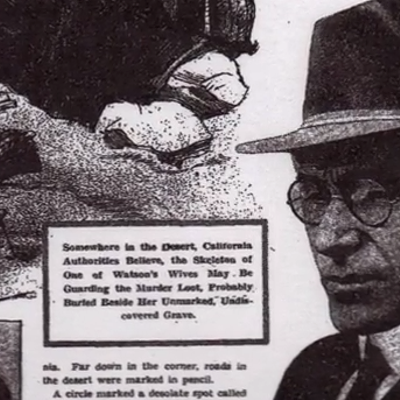Anyone who lives within the distribution range of The Inlander has opportunities to witness the aurora borealis or northern lights. While some events are visible as exotic glimmers from the back yards of Spokane, many residents have stood in the wild away from city lights and been absolutely dazzled by phenomenal curtains and swirls, the incandescence of light playing in the sky. Some speak of the way that the aurora can appear to overwhelm their senses, so that sound and touch seem to leak into the visual experience. Psychologists refer to such an overlap in sensory pathways as synaesthesia.
Early Northwest fur man David Thompson was a fan of the aurora. One series of intense incidents began when he made a nighttime beaver hunt around a northern lake with a young clerk named Andrew. They were in the midst of a cold snap. Only a few days before, Thompson's had measured a temperature of 56 degrees Fahrenheit below zero. After their gun misfired, there was no hope of a successful kill. The hungry walkers built a fire and sat down to watch a full moon rise over the lake, dreaming of good things to eat.
As Thompson wrote, "As we were about to rise, a brilliant light raced over the east end of the Lake... it was a Meteor of a globular form, and appeared larger than the Moon, which was then high; it seemed to come directly towards us, lowering as it came, when within three hundred yards of us, it struck the River ice, with a sound like a mass of jelly, was dashed into innumerable luminous pieces and instantly expired. Andrew would have run away but he had no time to do so; curiosity chained me to the spot."
True to his curious nature, Thompson set out to find evidence of a meteor crash on the river, but was astonished to find none whatsoever, even in a light drift of snow just deep enough to show his footprints. He had read accounts of fiery meteorites in Europe that had exploded with loud noise or thrown off a fusillade of stones. Thompson must have known he was dealing with something other than a rock from outer space, and his suspicions were confirmed only a few nights later when he witnessed another "meteor" fly right into the woods where he was walking:
"As it struck the trees," he wrote, "pieces flew from it, and went out; as it passed close by me, striking the trees with the sound of a mass of jelly, I was at a loss what to think of it. Its stroke gave sound, and therefore must have substance. These two Meteors were, perhaps, compressed bodies of phosphoric air, but without the least heat, for had there been any, the second Meteor passed so near to me I must have felt it."
In his years of traveling through the country above latitude 60 degrees north, Thompson grew accustomed to seeing the entire heavens alight with immense rolling sheets of rainbow colors. The camp dogs would howl with fear, and on nighttime hunting expeditions the brightness of the aurora sometimes allowed him to bring down an owl at 20 yards. He saw his voyageurs so enraptured by the displays of swirling light that they lost their sense of reality:
"My men were positive they did hear the rapid motions of the Aurora; this was the eye deceiving the ear. I had my men blindfolded by turns, and then enquired of them, if they heard the rapid motions of the Aurora — they soon became sensible they did not, and yet so powerful was the illusion of the eye on the ear, that they still believed they heard the Aurora."
In other writings, David Thompson equated the aurora borealis' transparent streams of light with the concrete mass of a meteor, admitting that when he watched those two "meteors" at the northern lake he had experienced the same sort of synaesthesia that he blindfolded his men to disprove.
Thompson, who married a Cree woman, also related that tribe's reaction to the aurora borealis. Their metaphor to explain the brilliance of the light works just as well now as it did then.
The Indians of North America call them the "Dead" by the name of Jee pe ak (the souls of the dead), and when the aurora is bright in vivid graceful motion, they exclaim, "See how happy our fathers are tonight — they are dancing to the enlivening songs of the other world."
Reach for the Stars!
For those who want to learn more about the aurora borealis and other mysteries of the sky, the Spokane Astronomical Society is holding an Astronomy Day on Saturday, May 14, at the West Valley Outdoor Learning Center, 8706 E. Upriver Drive (just west of Argonne Road and next to Pasadena Park Elementary School). It starts at 3 pm, with solar observing and telescopes on display. The society will have other activities located inside the learning center, and it will be fun for the whole family. If the weather holds out, telescopes will be set up after sunset in the school's field to look at the stars and planets until about 11 pm. Prizes and drawings, too — and the entire event is free. Visit www.spokaneastronomical.org. For a Web site that features stunning amateur photos of Aurora Borealis — many of them taken around Spokane — visit www.skychasers.net.
Publication date: 05/12/05




















